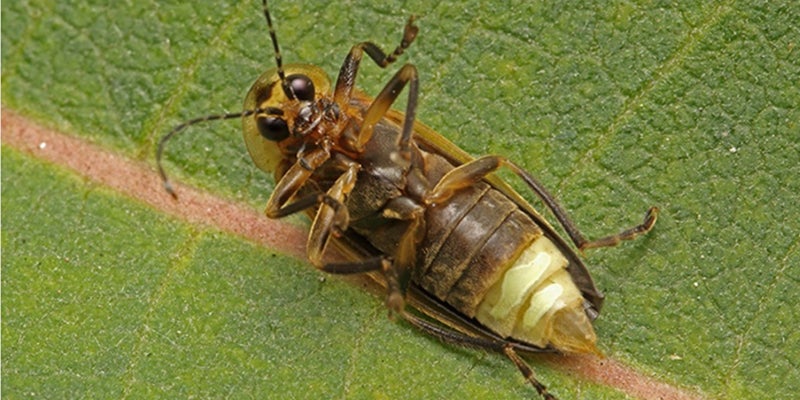Nature Notes: Summer night light shows
Published 6:18 pm Tuesday, June 7, 2022

- Photo provided
|
Getting your Trinity Audio player ready...
|
By Julie Champlin
Office Manager/Naturalist
Summer is here and June has the most hours of daylight. With the sun setting later, it gives us more time to be outside and listen to the choruses of birds, frogs and insects. The nights of June are alive with fireflies which happen to be one of my favorite insects. They might be one of our most beloved insects, inspiring poets and scientists alike. Fireflies, or lightning bugs are named inaccurately. Fireflies are not flies or bugs, they are actually a type of beetle. Over 2,000 species exist on our planet.
There are 136 species of fireflies, which are soft-bodied beetles, in eastern North America, and about 15 are found in Minnesota. They seem to magically appear close to dusk in parks, wetlands, tall grassy spots, old fields, forest edges and can be found in our own backyards. As darkness falls the light show begins. This display of light is not just to entertain us.
Love is in the air and male fireflies are looking for a girlfriend to mate. The flash of light is a recognition signal, enabling the sexes to find each other. Each firefly species has a characteristic flashing rhythm. A male will emit flashes of yellowish light at intervals of a few seconds while it flies a few feet from the ground and on up to treetop level. Females wait on top of lower vegetation. (Most female fireflies can’t fly) They will flash back if a flashing male of their species comes within about six feet. The exact number of seconds between flashes distinguishes the species. This special light is produced by combining a chemical called luciferin with a luciferase enzyme and oxygen. This controlled bioluminescence takes place in the fireflies’ abdomen. Colors of firefly lights range widely among the different species from yellow, green, orange, turquoise and a bright poppy red. We don’t often see fireflies before they reach adulthood so you may be surprised to know that they glow in all of their life stages. Bioluminescence begins with the egg and is present through the entire life cycle. All firefly eggs, larvae and pupae can produce light.
Fireflies are harmless. They don’t bite, they have no pincers, they don’t attack, they don’t carry disease, they are not poisonous and they don’t fly very fast. The larvae of most species are specialized predators and feed on other insect larvae, snails and slugs. When they become adults, fireflies may eat pollen, nectar or nothing at all. Some adult fireflies are cannibals. A deceptive light is used by the female Photuris firefly. She will mimic flashes of males of other species enticing interested males who then become her next meal. Their lifespan is very short about two months. Fireflies (as well as their larvae, glowworms) help to control garden pests like snails, slugs, cutworms, and aphids, so be sure to keep them around if you have them in your garden. If you want to catch fireflies, keep them safe by placing a wet paper towel in the bottom of a glass jar. Pierce holes in the jar’s lid so that the fireflies can breathe. Don’t forget to release them after a day or two.
Enjoy the free firefly light shows at night this summer!
Canoe/kayak rental has begun. Only available during our business open hours. Cash or check only. $10 a boat for three hours.
Free Events at the Nature Center in June
Wednesday: Live Bird Program in Classroom, 4 p.m.
Thursday: Senior Special: Greta Wilkening, 10 a.m.,
Nature Play Program: Wonderful Wetlands, 1 p.m.,
Nature Play Activities, 1-4 p.m.
Saturday: Sola Fide Observatory – Weather Dependent, 9-11 p.m.
June 15: Volunteer Outdoor Work Day, 3:30-5 p.m.
June 18: Nature Play Afternoon with Archery, 1:00 – 4 p.m.
June 21: David Stokes Evening Program, 6:30 – 7:30 p.m.
June 23: Senior Special: David Stokes, 10 a.m.;
Nature Play Program: David Stokes, 1 p.m.; Nature Play Activities, 1-4 p.m.
June 25: Sola Fide Observatory – Weather Dependent, 9-11 a.m.




